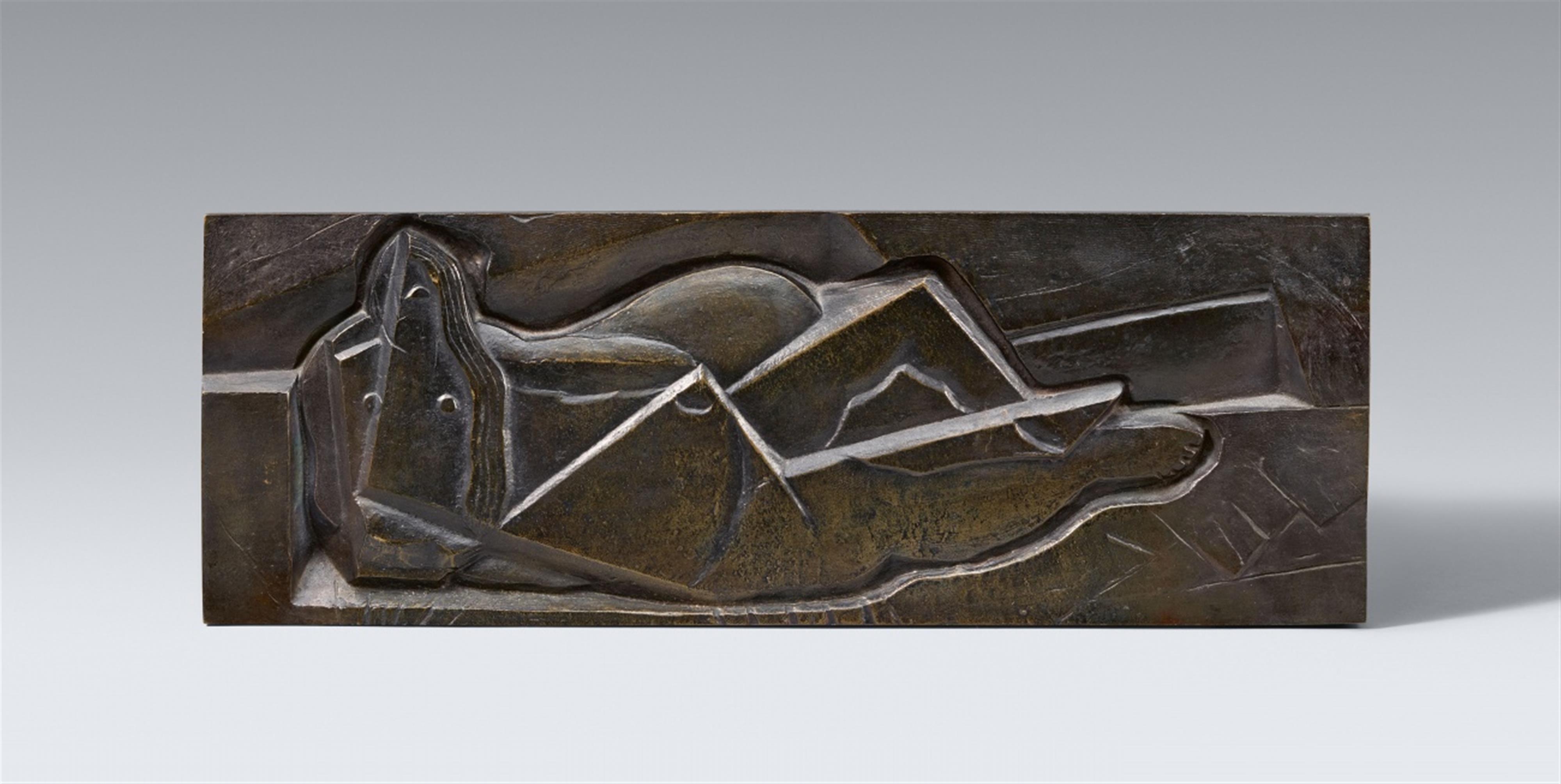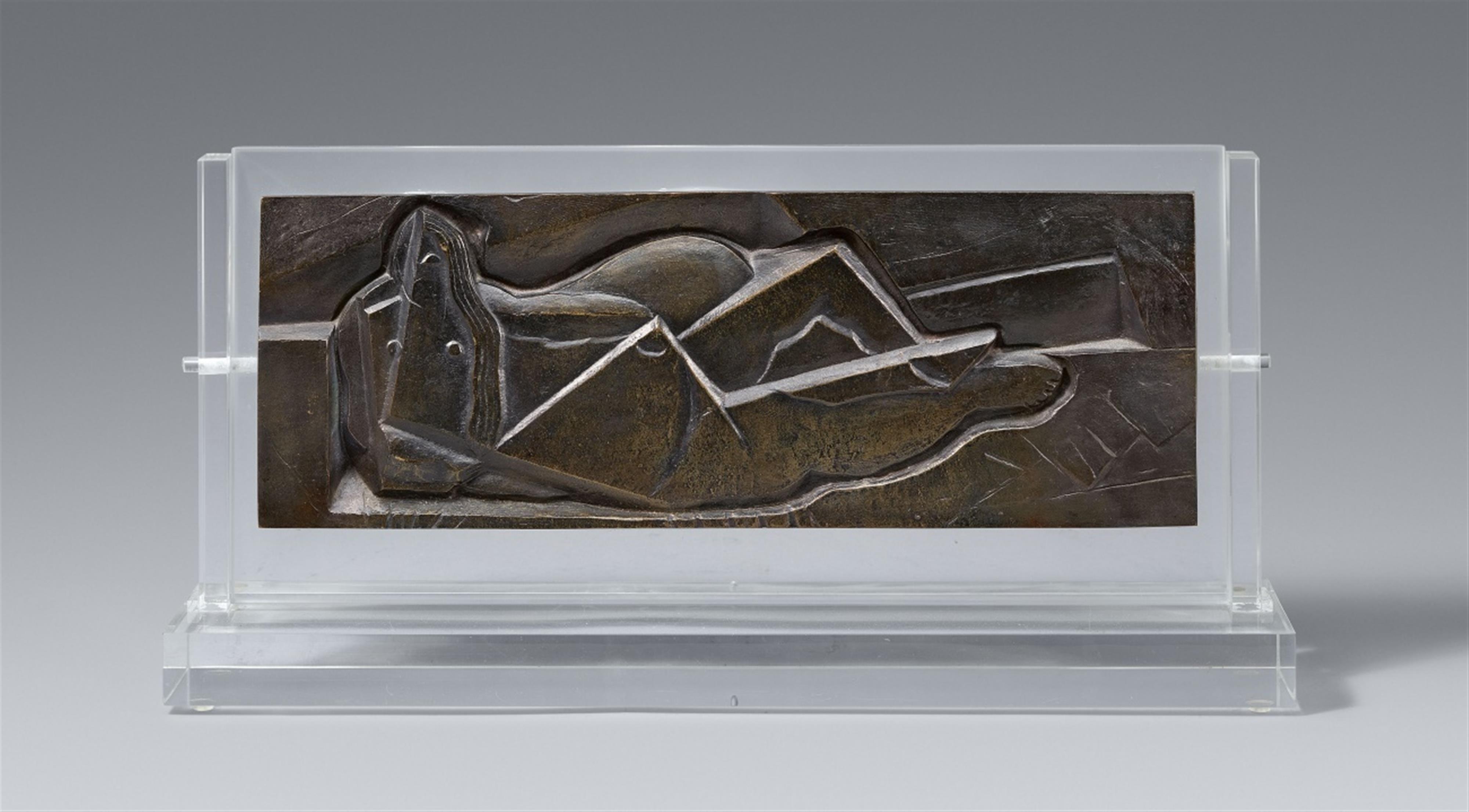Henri Laurens
Femme couchée (de face)
1921
Bronze relief 13.7 x 39.2 cm Framed in acrylic glass stand. Fragmented paper label by Galerie Louise Leiris, Paris, verso. Thereon annotated with title and number of exemplars handwritten in ink. One of 8 casts. - Fine olive-coloured patina with a partly reddish iridescence.
“Femme couchée (de face)” depicts a reclining female nude whose image fills the entire relief. The body, which has been divided up into individual geometric forms according to the principles of Cubism, is turned towards the viewer to be seen from almost every side: the head in lost profile is turned to the left, the breasts and upper body are presented frontally, the belly twists in the opposite direction and points upwards with the curve of the buttocks appearing simultaneously. Here the synchronicity of the asynchronous has been joined together into a space-image continuum. Werner Hofmann, who had already begun occupying himself with Henri Laurens's work early on, directed his analytical gaze at a sculpture of a head from 1920, and the insights he formulates in this passage are interesting with regard to our relief: “The dissociation, understood not as an expressive violation but as a syntactically new freedom, […] not only demonstrates the space for variation that the sculptor has extracted from the pretext 'head', it also reveals a fundamental law of Cubism. I think of the interpenetration of representational quotations and non-representational symbols, with the latter setting the tone and guiding the formal structure. Their ambivalence enables them to also take on the function of representational allusions” (Werner Hofmann, op. cit., p. 12).
Daniel Henry Kahnweiler, who had to give up his Parisian gallery in the late 1930s and transfer it to his sister-in-law Louise Leiris, met Henri Laurens in 1920. Looking back he stated: “Picasso [had] left Montmartre, but Juan Gris still lived in the Bateau Lavoir, and Braque lived with his wife in Rue Simon-Dereure. He and Laurens could wave to one another from their windows. […] I have pointed out often enough how important Henri Laurens's work appears to me. His part in the 'grand epoch' of Cubism can hardly be estimated highly enough. […] His development seems to me to progress like that of his companions Braque, Juan Gris, Picasso” (cited in: ibid., pp. 49 f.).
Provenance
Galerie Louise Leiris, Paris, acquired there; since then Family possession, USA
Exhibitions
Cologne/Krefeld/Hamburg/Basel/Berlin 1955/1956 (Eigelsteintorburg/Kaiser Wilhelm Museum/Kunstverein Hamburg/Kunsthalle/Haus am Waldsee), Henri Laurens, cat. no. 6; London 1971 (The Arts Council), Sculpture and Drawings by Henri Laurens, p. 39 with illus.; Bielefeld 1972 (Kunsthalle), Henri Laurens. Plastiken, Graphiken, Zeichnungen, cat. no. 2, p. 24 with illus.; Hanover 1985 (Sprengel Museum), Henri Laurens, cat. no. 3, p. 21 with colour illus. (collection exemplar); Lugano 1986 (Galleria Pieter Coray), Laurens Cubista, cat. no. 21, p. 70 with illus.




